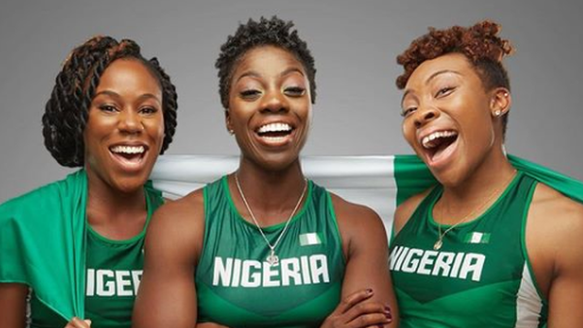Sabrina Simader: Kenya's 'Snow Leopard' aiming for Olympic glory
- Published
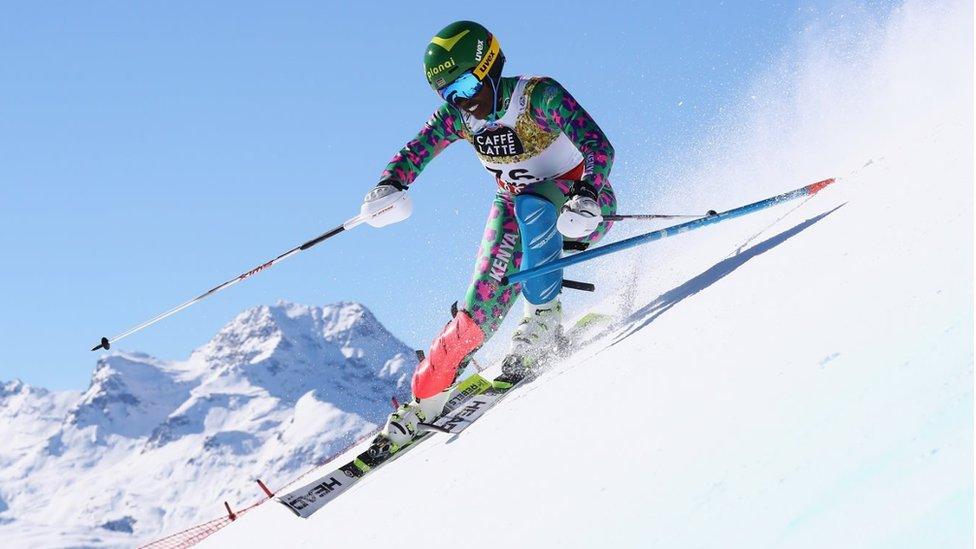
Sabrina Simader is the first Kenyan first woman to take part in alpine skiing at the Winter Olympics
When Sabrina Simader moved to Austria from her home in Kenya, she was fascinated by the snow.
Years later, that initial interest in the mountains and ski slopes of her new home has evolved into a passion which has put her on a path to making history - the 19-year-old is set to become the first female alpine skier to represent Kenya at the Winter Olympics.
"It was my step-father's dream to have a Kenyan [in the Winter Olympics]," Simader told the BBC, before adding: "And mine too."
'This girl can ski'
Her journey to the 2018 Games in Pyeongchang, South Korea, started when she was just three years old. Her step-father Josef owned a ski lift and took Simader out on the slopes. He acted as her trainer and taught her what she needed to know.
But as one of the only black skiers in the region, her presence on the slopes often drew stares from onlookers.
"In school I was always the only black girl," she said. "At the beginning it was hard, they were always watching me."
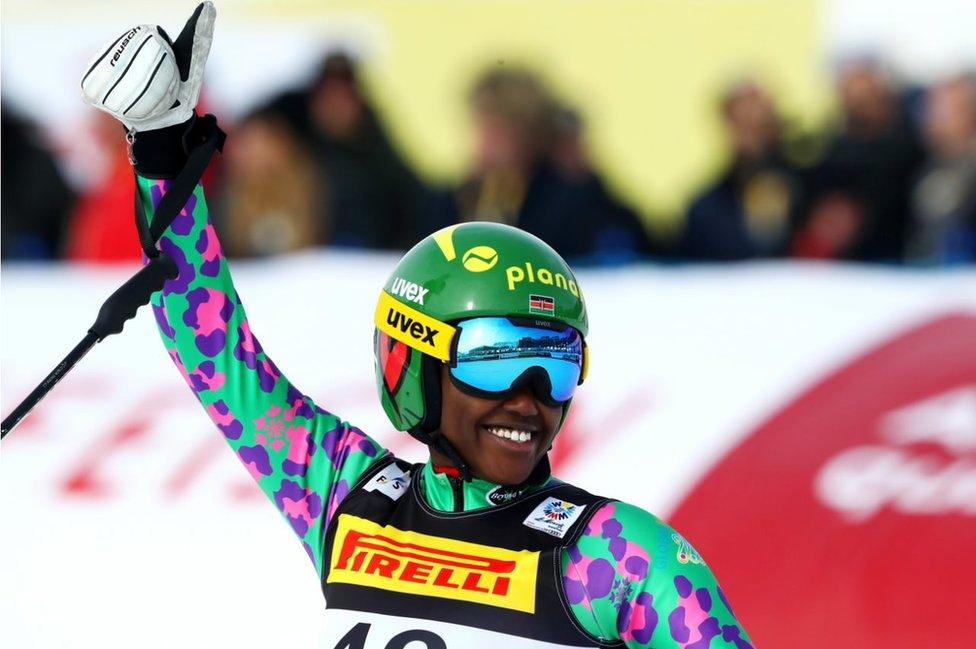
Simader was born in Kenya, but moved to Austria when she was three
But as she got better on her skis, she says people became impressed by her technique and her speed.
"They were really shocked that a black girl can ski like like this," she said.
Soon it became clear that the dream she and her stepfather shared could come true - and despite growing up in Austria and spending the majority of her life there, Simader says choosing to represent Kenya was a no-brainer.
"My mother is from Kenya, my family is from Kenya," she explained. "I never want to leave my motherland."
Allow Instagram content?
This article contains content provided by Instagram. We ask for your permission before anything is loaded, as they may be using cookies and other technologies. You may want to read Meta’s Instagram cookie policy, external and privacy policy, external before accepting. To view this content choose ‘accept and continue’.
The last time she visited Kenya was five years ago, but Simader says the reaction and support from the Kenyan public has been positive.
"Kenyans are really impressed," she said. "They have been really supportive and that gives me power."

More stories like this:

Simader qualified for the Games after competing in the World Championships last February, making her the second Kenyan after Philip Boit to represent the East African nation at the Winter Games.
She also represented Kenya at the 2016 Winter Youth Olympics in Norway, when she came in the top 25 of all three disciplines she competed in.
Crowdfunded skier
But unlike the public support, Simader says things have been "difficult" with the Kenyan National Olympics Committee - something she attributes to a lack of awareness about the sport, the equipment and huge costs attached to it.
The BBC has contacted the Kenyan NOC and is awaiting a response.
Simader estimates that it costs around €200,000 ($250,000; £175,000) to fund an entire season, and though the NOC supported her during the World Championships last February, she has largely been helped by her four sponsors, without whom she says she wouldn't have achieved what she has done so far.
To fund her Olympic bid and ensure she can fulfil her dream, she has also turned to crowdfunding.
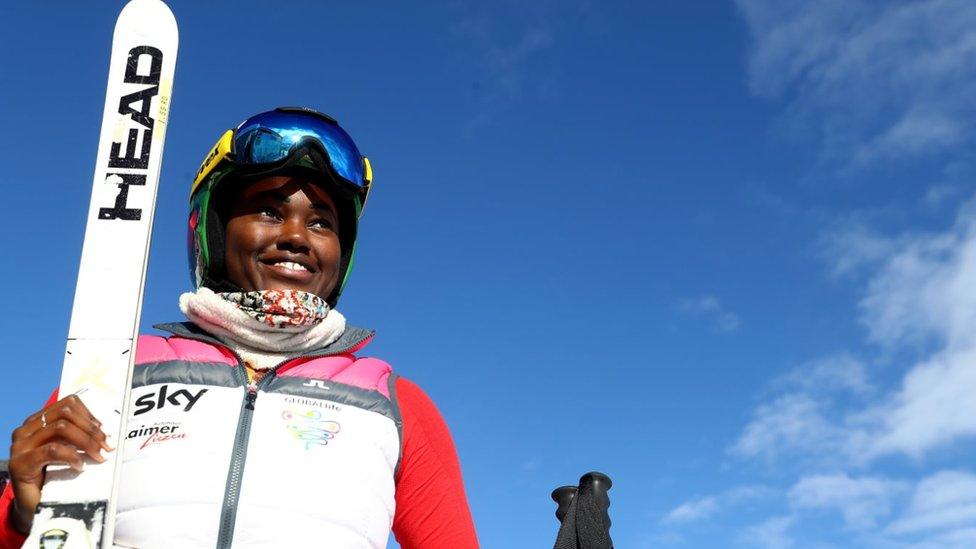
Her loyalty remains with her country of birth
And as she gears up for the biggest stage of all, Simader says the stares from onlookers have resurfaced.
She is the only African woman to qualify for alpine skiing in the Games and, outside Austria, she remains relatively unknown.
But the looks do not deter her.
"Stares give me a push," she said." That I can make it. I can prove myself."
Her aim for the Games is simple, to compete well and show the world that "a Kenyan girl can ski really fast".
And with the emergence of the Nigerian Bobsleigh team she welcomes not being the only African in the competition.
"It's great not to be alone as an African competing," she said. "I'm happy the other guys can compete and show [the world] what Africans can do."
Winter Olympics: Who Are The Africans competing at Pyeongchang 2018?
- Published16 January 2018
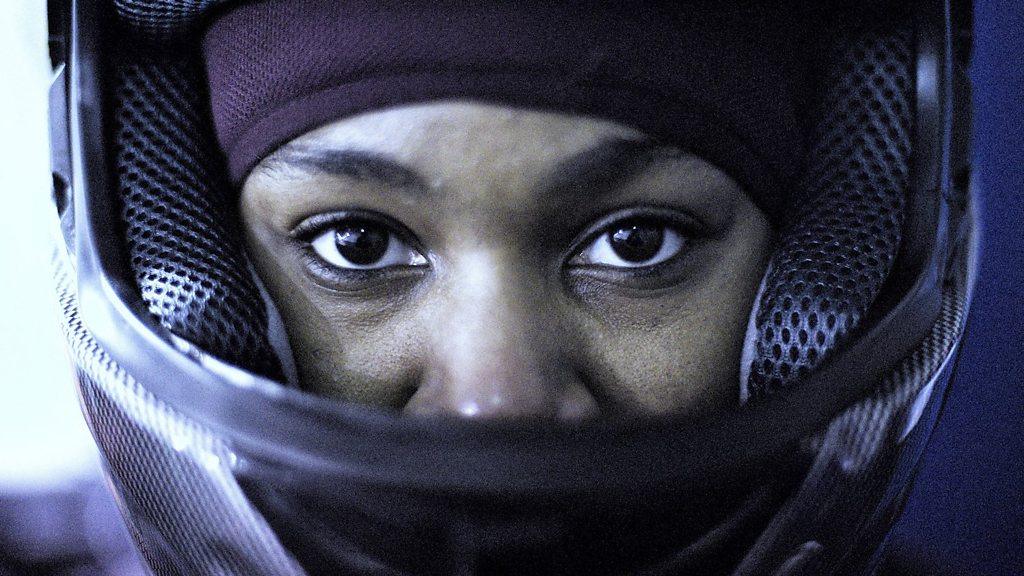
- Attribution
- Published20 January 2018
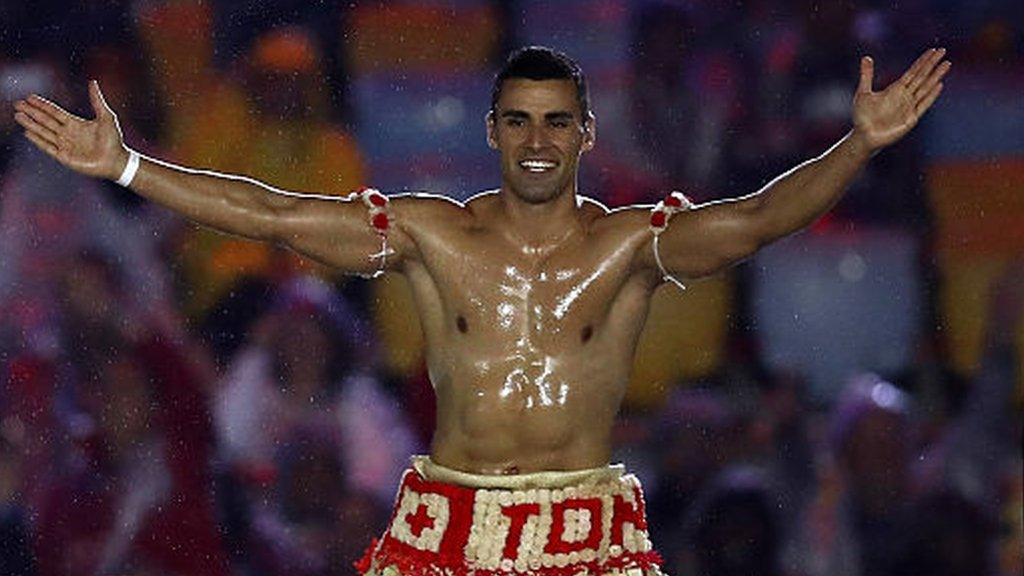
- Published28 September 2016

- Published25 August 2016
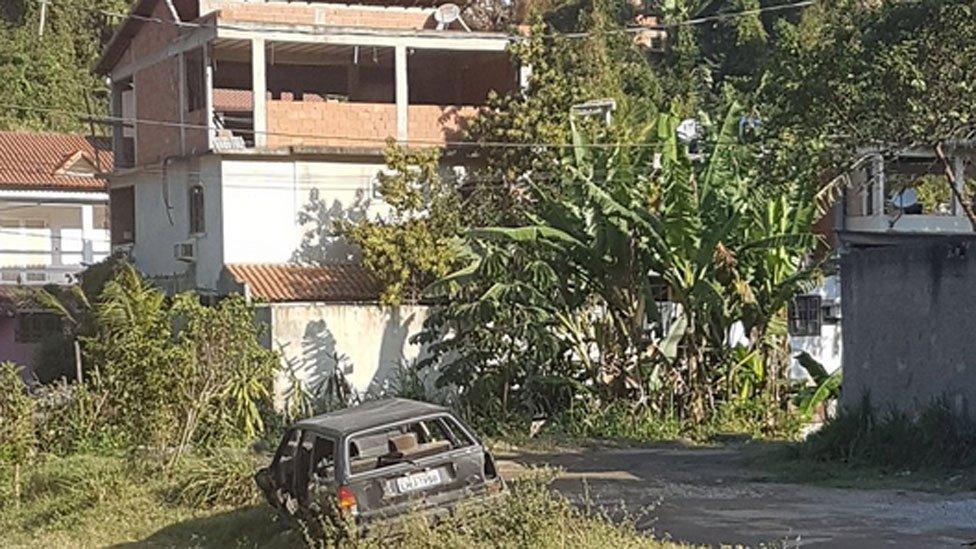
- Attribution
- Published23 January 2018

- Attribution
- Published7 December 2017
